utnuc
Member
I'm getting ready to start my third FT plane build, and I have to say the most difficult part of the process is getting the bevel cuts right. Bixler makes it look so easy to get those perfect freehand 45 degree bevel cuts with a sharp razor blade. My experience was that I'd dangerously hack away at the foam, ruining the part I'd just spent 30 minutes cutting out.
So I reverted to the sanding method. It's pretty effective, but has some definite cons
Since I didn't need a large cutter, I decided to build a small handheld version. Again, just find some youtube tutorials on how to build one. I used an old plastic clamp like this one, a couple of nuts and bolts with washers, a single strand of steel wire from some cable I had laying around, some 14g speaker wire and a xt-60 connector. The key to a straight cutting wire is to keep tension on it, since it expands as it heats up. With my 12v/12a power supply, the wire will turn red hot in seconds. Nice thing about this setup is that I can use a lipo battery too. Here's a picture of the somewhat janky appearing handheld foam cutter.

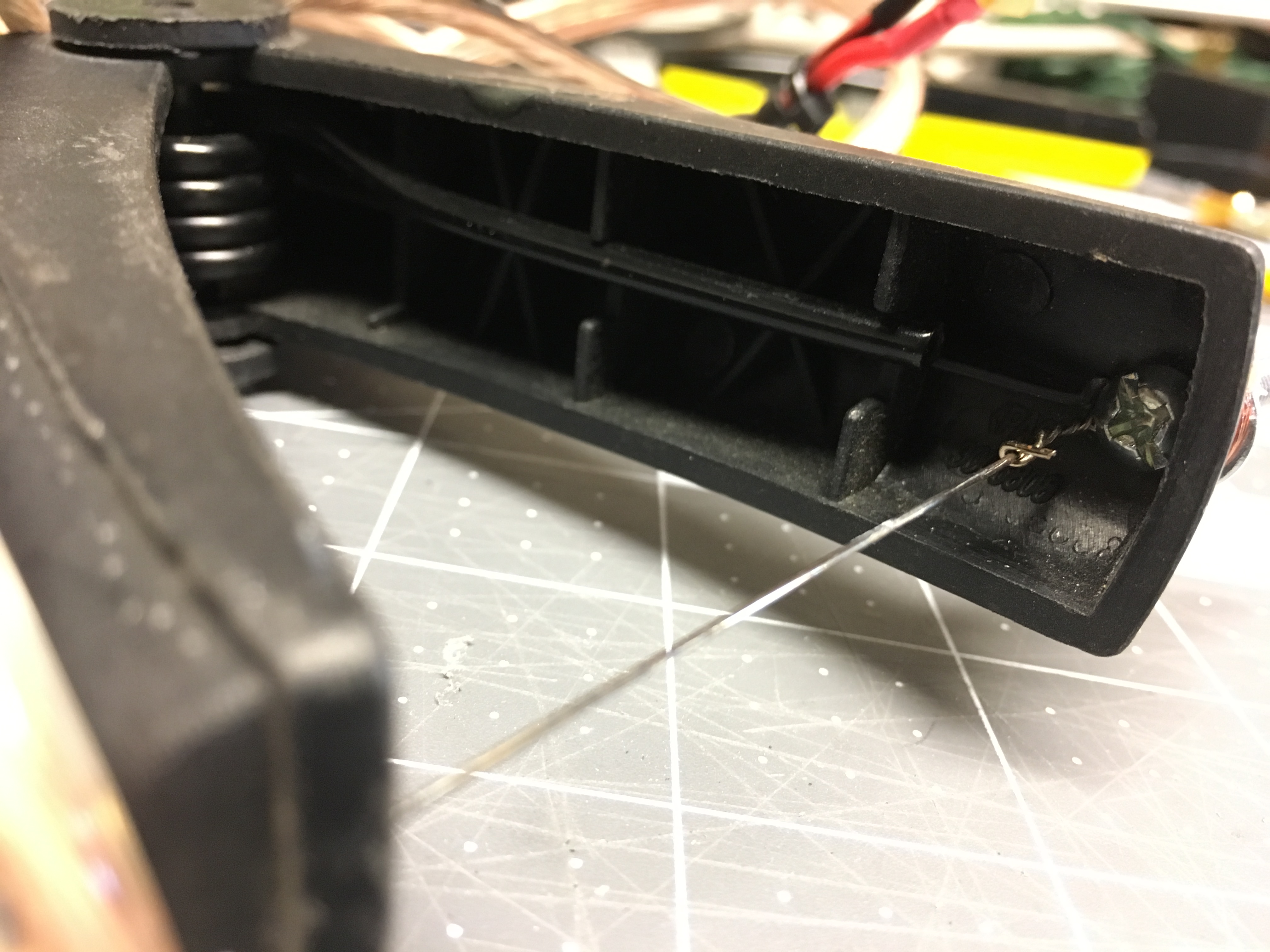

So to make a 45 degree bevel cut using the hot wire:
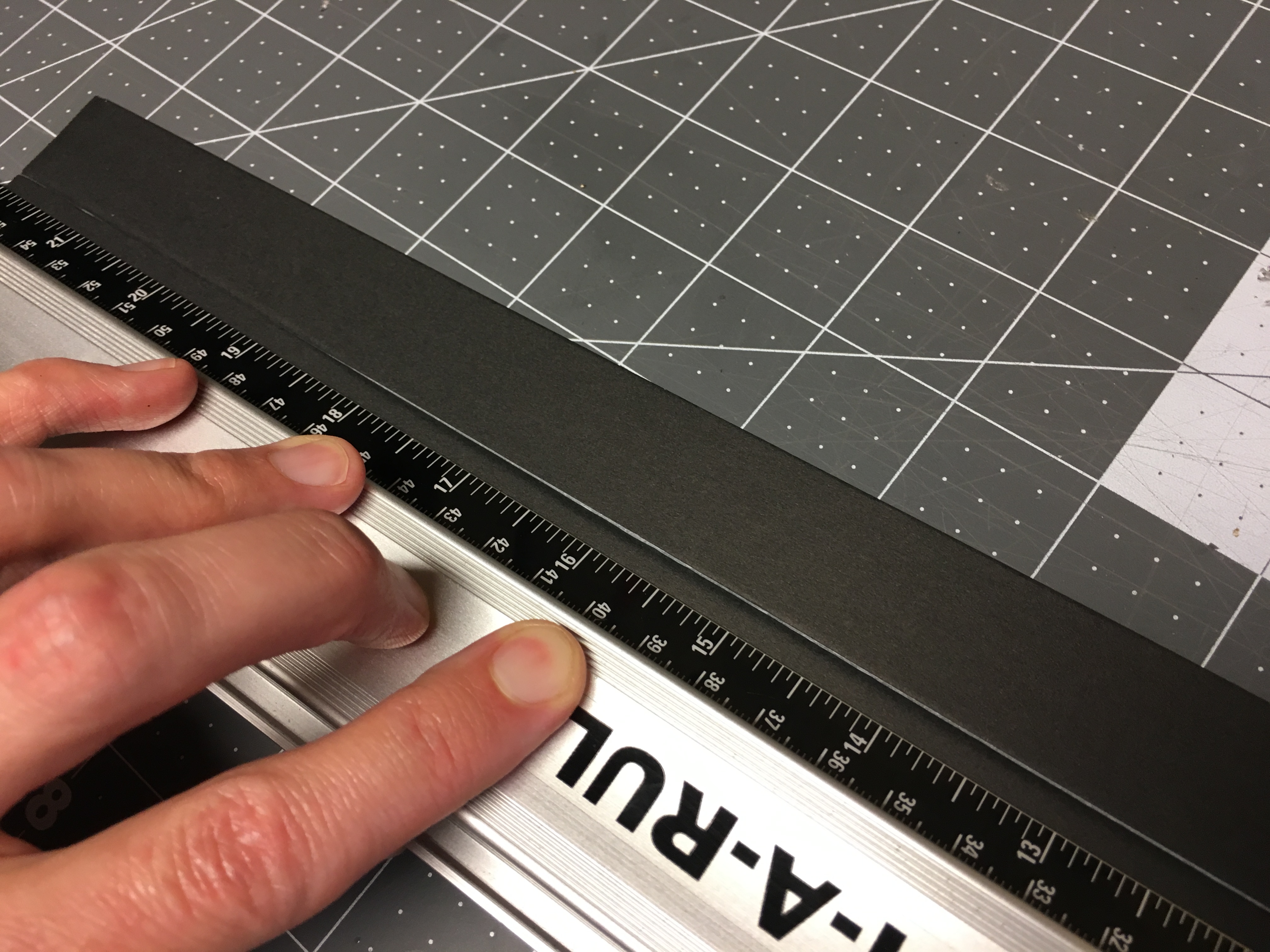
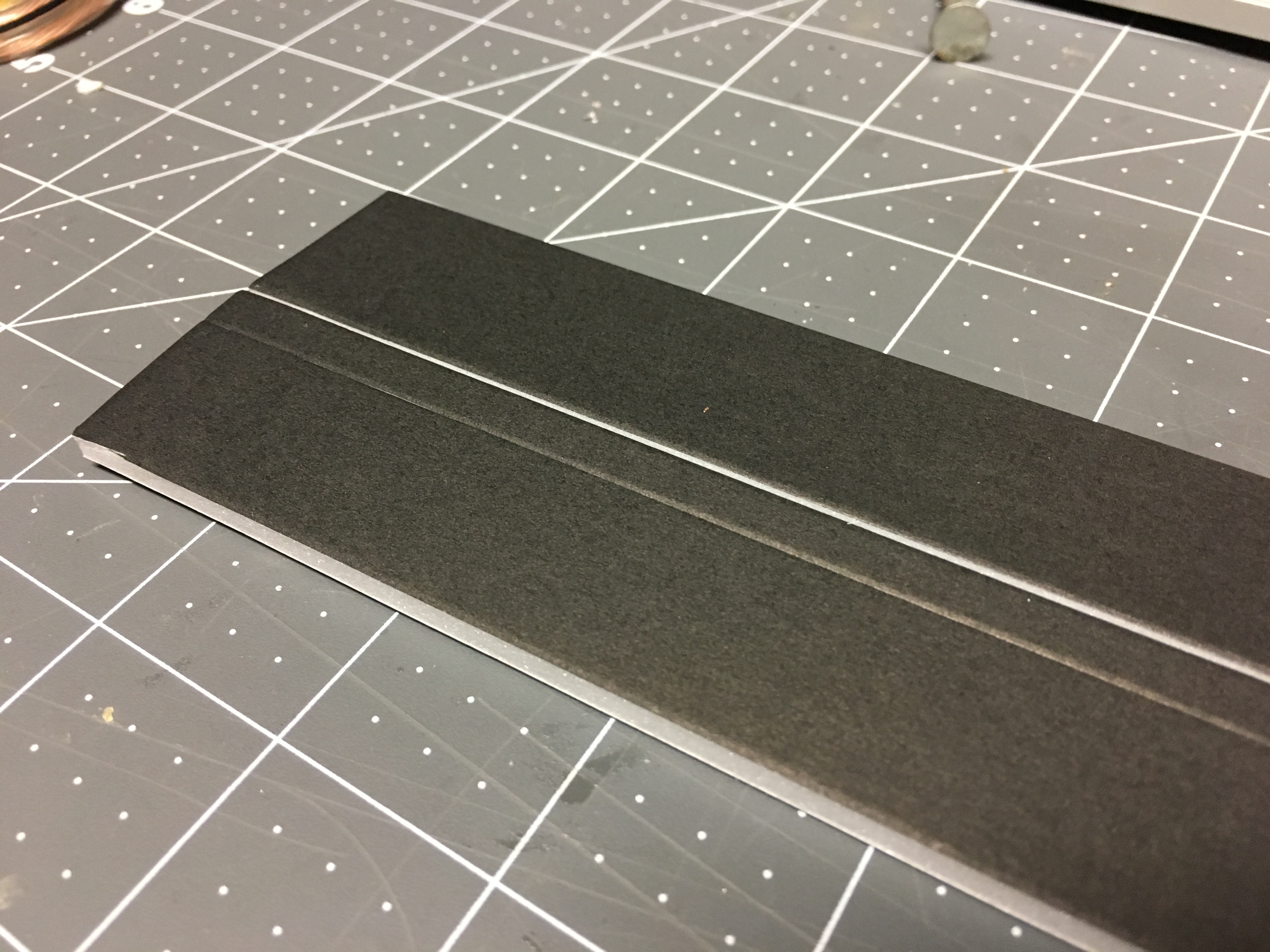

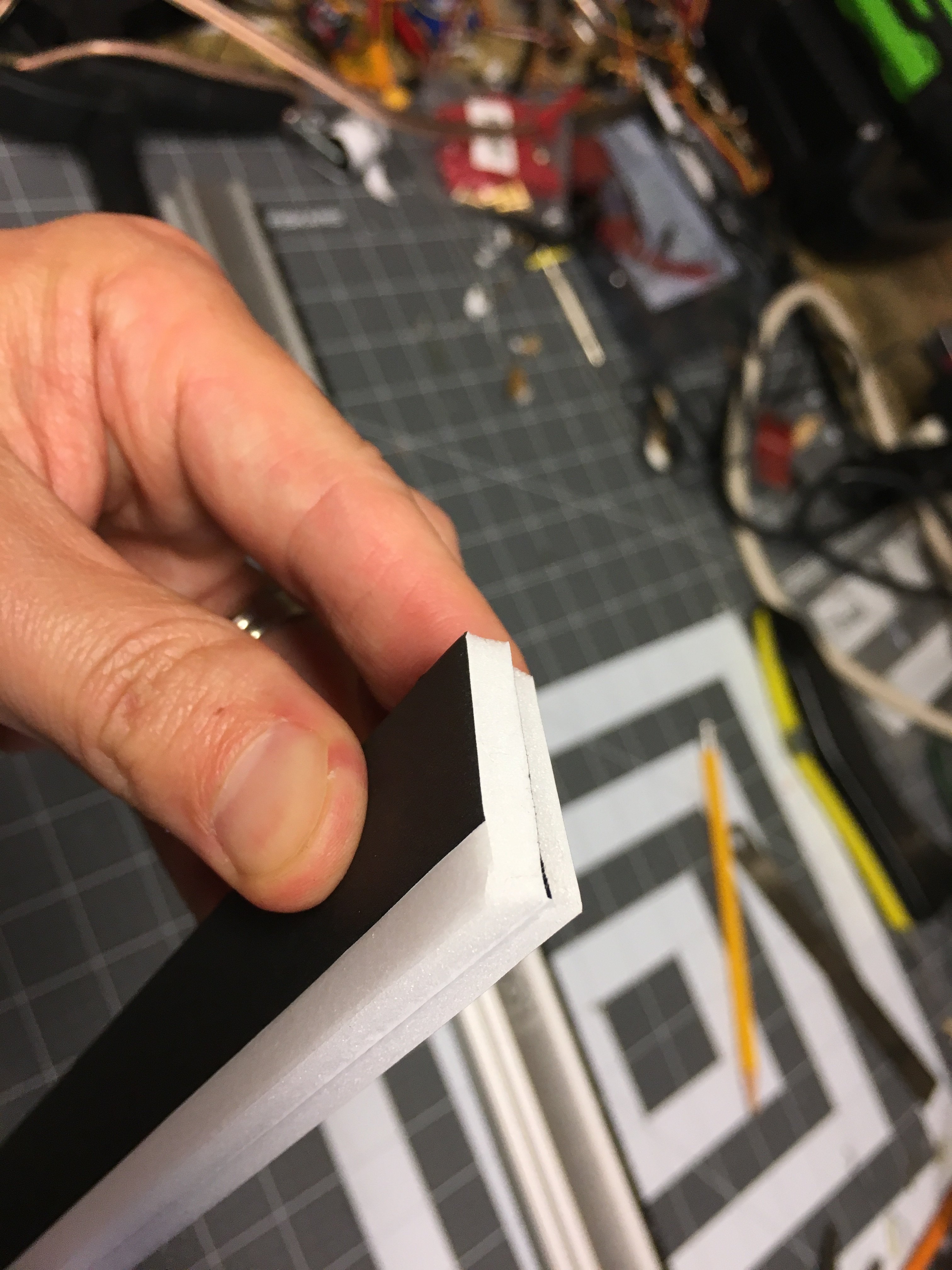
After practicing with it for 5 minutes I'm getting perfect bevel cuts. One note, when you first put the wire to foam it'll be hot enough to burn paper, so it's useful to have a scrap piece to touch it to before you start your cut. Once it's going through the foam you can keep enough pressure on it to touch both pieces of paper without it burning either one. Here's the final result:
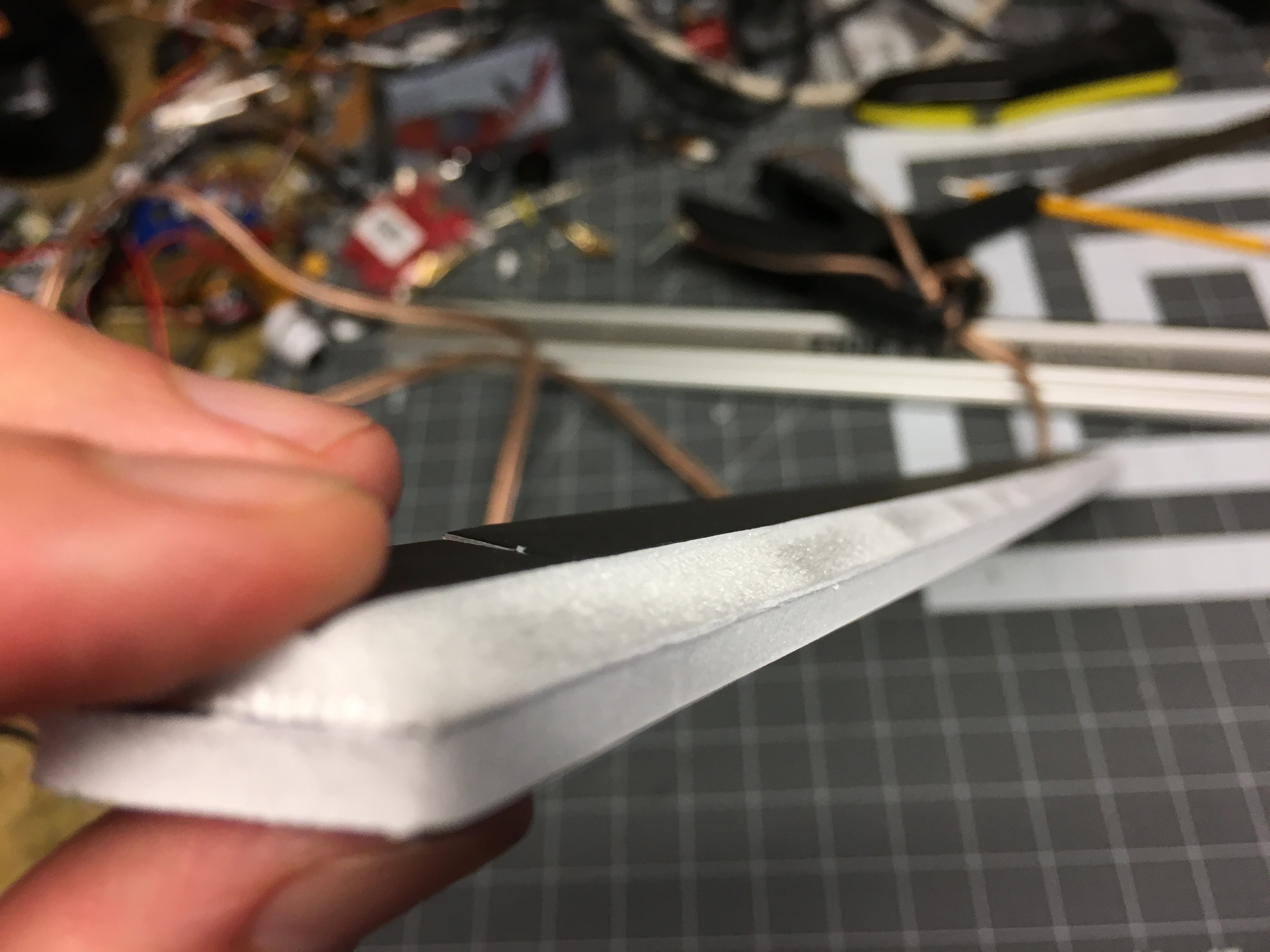

So I reverted to the sanding method. It's pretty effective, but has some definite cons
- leaves a very ratty paper edge that tends to peel back from the foam
- it's easy to sand all the way through the foam, requiring tape reinforcement on the back side
- it's really messy, leaving foam powder everywhere
- it takes a long time to get right, if you leave a section too thick the entire control surface will have a limited range
Since I didn't need a large cutter, I decided to build a small handheld version. Again, just find some youtube tutorials on how to build one. I used an old plastic clamp like this one, a couple of nuts and bolts with washers, a single strand of steel wire from some cable I had laying around, some 14g speaker wire and a xt-60 connector. The key to a straight cutting wire is to keep tension on it, since it expands as it heats up. With my 12v/12a power supply, the wire will turn red hot in seconds. Nice thing about this setup is that I can use a lipo battery too. Here's a picture of the somewhat janky appearing handheld foam cutter.



So to make a 45 degree bevel cut using the hot wire:
- Eyeball 5mm away from the hinge, place a ruler there parallel to the hinge and run your knife just barely through the paper


- Remove the thin strip of paper


- Turn on the foam cutter
- Holding the hot wire so it lines up with the paper on either side of the bevel cut, slowly drag it through
After practicing with it for 5 minutes I'm getting perfect bevel cuts. One note, when you first put the wire to foam it'll be hot enough to burn paper, so it's useful to have a scrap piece to touch it to before you start your cut. Once it's going through the foam you can keep enough pressure on it to touch both pieces of paper without it burning either one. Here's the final result:





